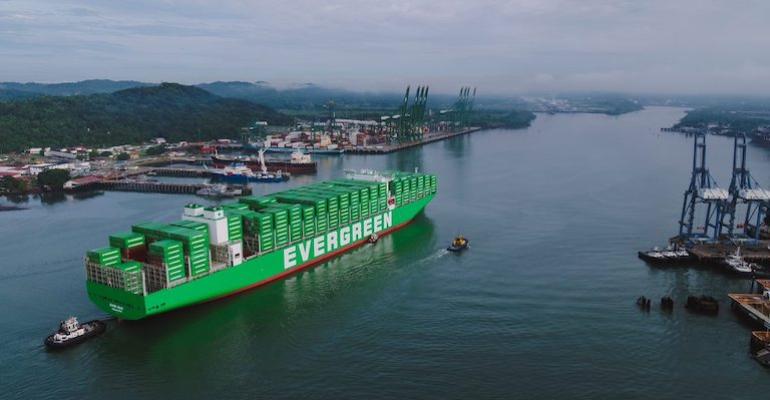With the largest boxship to transit the canal Ever Max having to unload part to use the waterway last week, and limits on vessel numbers, the Panama Canal could see a $200 million dip in earnings in 2024.
The Panama Canal is facing intense water shortage caused by climate change and the El Niño phenomenon. The lack of rainfall in the Canal watershed, even in full rainy season, is threatening to dry up the canal lakes, and the Panama Canal Authority (ACP) must quickly find solutions to remain a reliable route for international liners, Panama Canal Administrator Ricaurte Vasquez said last week.
The ACP Board of Directors is still discussing which projects may be viable to present to the Executive and how to address the water issue. One of them, is the possibility of building a water reservoir in Rio Trinidad, to supply the Canal and thus lower the pressure on the already depleted Madden Lake for its expansion, he added.
Last month, the ACP extended restrictions on the maximum depth for ships and limited average transit to just 32 vessels per day due to the abnormally dry weather
As an example of the on-going crisis at the waterway, and just last week, the Canal experienced the need to move cargo overland from the largest vessel that ever used the waterway, Evergreen’s Ever Max a 17,312-teu container vessel. The Ever Max is the first neo-panamax forced to unload cargo to be able to transit the Canal.
The Singapore-flagged vessel had to unload 1,400 teu at the port of Balboa to meet the current draught restrictions transiting the waterway with 43 feet draught and 13,345 teu onboard. The containers were loaded on the railway to Colon, for the vessel do a light transit, and then reloaded on the Atlantic side to continue her route to Savannah, Georgia, after paying $1.5 million in tolls.
The Ever Max incident showed how climate change can dramatically affect the waterway operations, raising the potential for alternative routes.
Copyright © 2024. All rights reserved. Seatrade, a trading name of Informa Markets (UK) Limited.
Add Seatrade Maritime News to your Google News feed.  |

